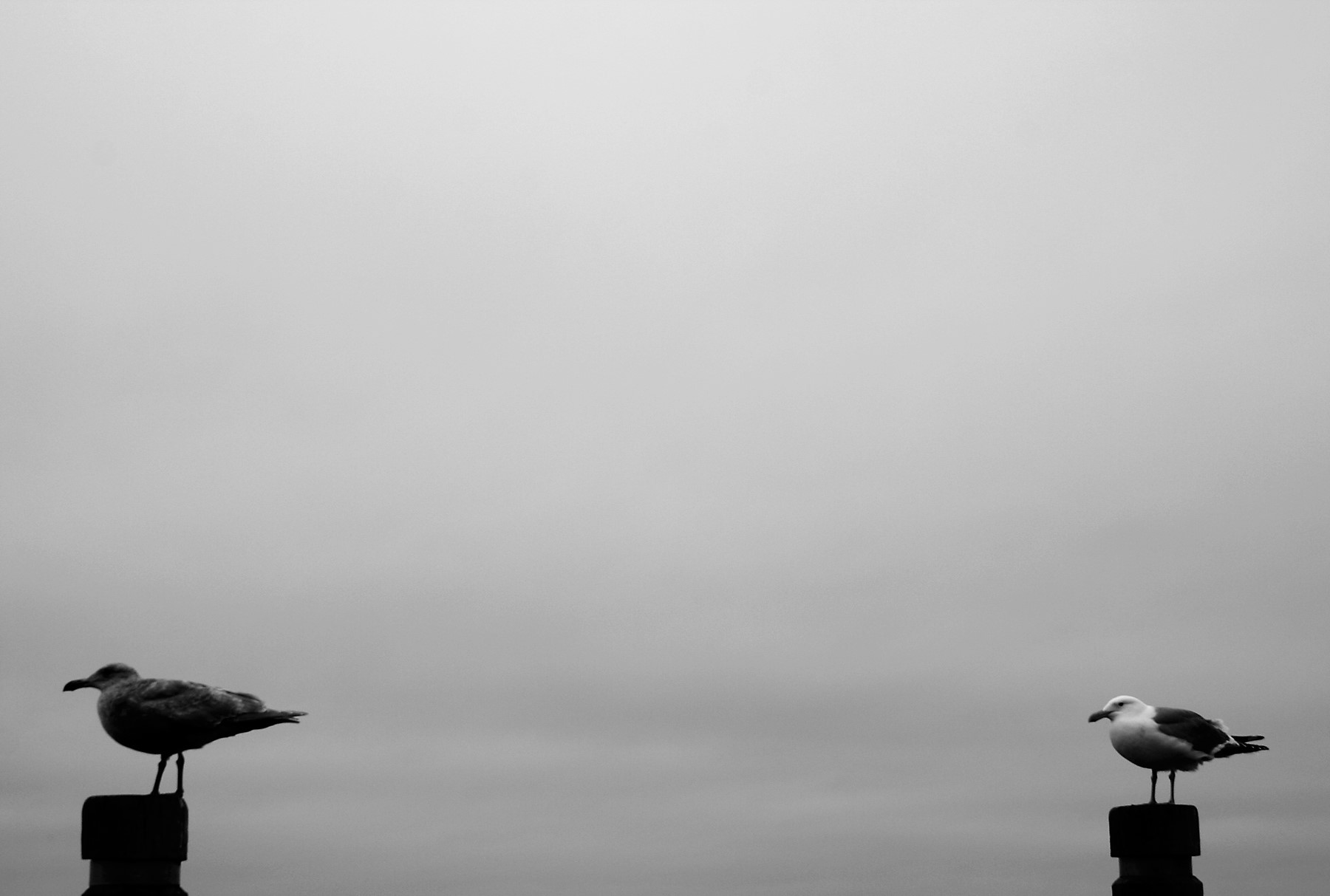My Friends the Gulls
Some 15 years ago, I heard a story about an employee of a coastal restaurant who beat a one-legged gull to death with a stick out back of the establishment. Apparently the gull served as the establishment’s mascot, and for whatever reason, if sociopathic behavior can be said to have logical reasons, the employee bashed the bird to death.
The man who recounted the incident to me heard about it from an eyewitness who later called the police. An investigation ensued, but the perpetrator wasn’t arrested, even though killing a gull constitutes a crime under federal migratory bird law, punishable by a maximum fine of $15,000 and a maximum prison sentence of two years, depending on the offense.
The tale of the senseless and horrific murder of a gull has never left my mind. I can also never forget driving behind a pick up truck and watching a male driver purposely swerve into the shoulder of Highway 20 and kill a gull. Who are these people? What happened to their moral development? What books do they read to their children?
Frankly, I much prefer gulls to most human beings. They are my close friends on Oregon’s ocean beaches and have many advantages over us. For one thing, they can fly and ride the thermals with an effortless grace I envy. I prefer their clucking language to English. They also don’t talk on cell phones in restaurants. Nor do they use leaf blowers, murder one other over religion, experiment on primates, or snort methamphetamine. They don’t hashtag, either. Yes, they do eat terrible fast food but only because some human being came to her senses and threw it away.
Gulls are such a ubiquitous presence on the Oregon Coast, but really, do we know all that much about them? Should we?
I don’t know who wrote it, but somewhere I read something to the effect that, “It behooves us to know the names and interesting details of the sentient creatures we see and interact with every day.” I have at least one wonderful interaction a day with a gull and I can’t say the same about human beings.
Gulls fascinate me and I’d like to take this opportunity to educate people about them. For that I am indebted to a charming little book called Gulls: A Social History, written by Frank Graham Jr. with photographs by Christopher Ayers, published in 1975. In this long out-of-print book, Graham writes: “We would be poorer without gulls than they would be without us; these beautiful and fascinating creatures add to the marvelous natural diversity that enriches our lives.”
Amen to that.
For starters, there is no such creature as a seagull. There are 44 different species of gulls and some live as long as 20 years. I learned about their interesting mating, interspecies breeding, migratory patterns, and that even the sharpest birders have difficulty telling many of the species apart.
I also learned that not all that long ago, many local populations of gulls were nearly wiped out across North America by eggers, milliners, and the government, the latter spreading poison to arrest the proliferation of certain species in favor of other birds. It’s a ghastly tale, biologists killing wildlife to save certain (politically) preferred species, and still plays out today, (think hatchery salmon over euthanized sea lions on the Columbia).
Yet the gulls survived, by adapting to various wasteful human trends, like landfills, and as Graham writes, “We are contemporaries in a sense, riding the runaway vehicle that is the modern industrial world.” He wrote that two years after the Arab Oil Embargo and 26 years before the debut of the ipod. One does sort of think that when human beings wind down their time on Earth, which is inevitable, gulls will remain. They’ll adapt and keep on flying.

